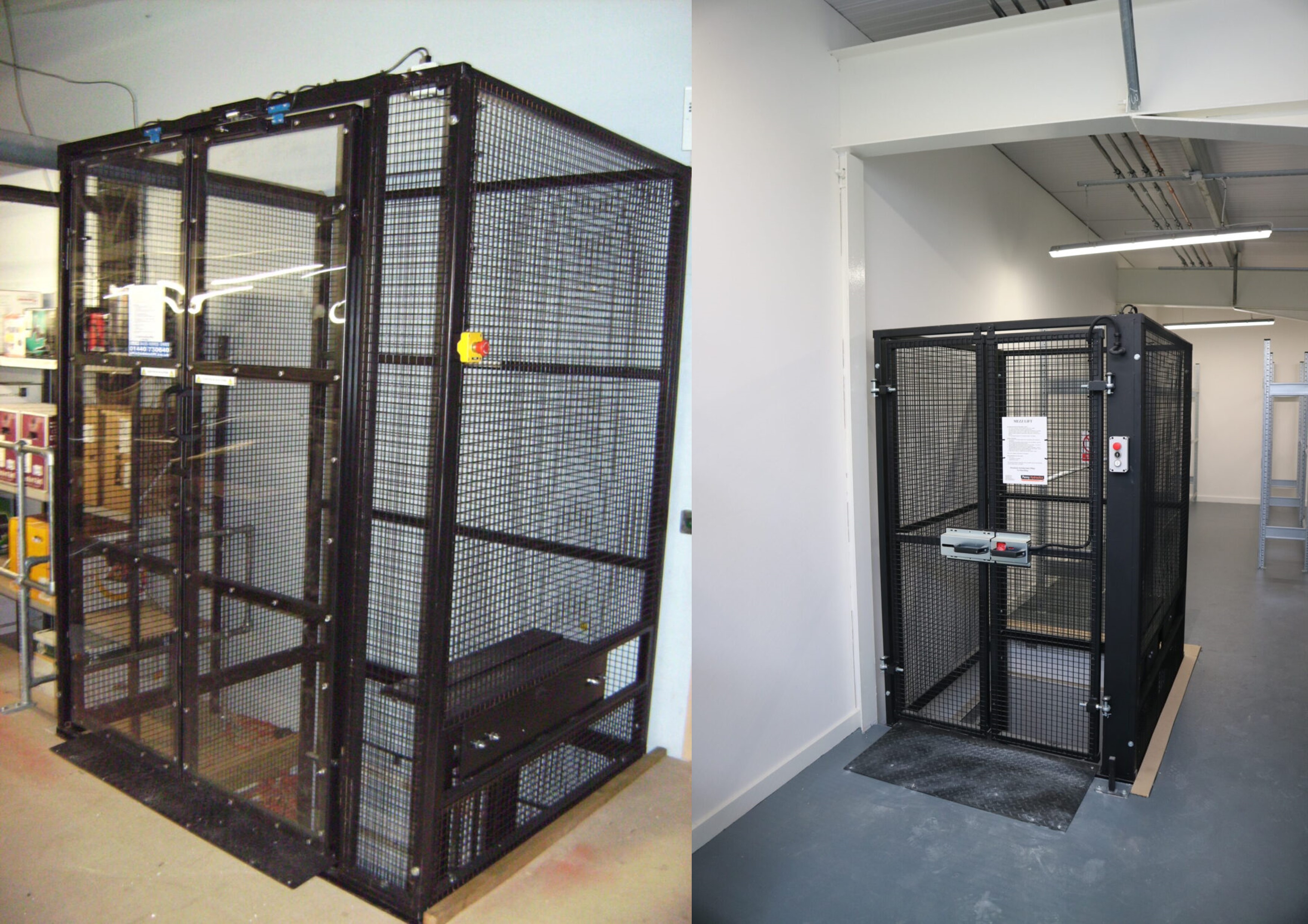Tuesday 16th January 2024

What is a Mezzanine Goods Lift?
It is like a versatile elevator-like device designed to move goods, products, or materials safely and efficiently between different levels within a building especially in spaces where mezzanine floors or multiple levels exist.
In other words, it is a platform lifting goods between two or more floors. Mezzanine floor lifts travel within a self-supporting mesh clad shaft, installed inside or outside a building.. Access gates can be located on one or both sides of a mezzanine floor lift, providing either through-car or same-side loading.
Mezzanine floor lifts can be used in any building with one or more ladings, able to lift up to 1000kg. Platform sizes vary according to the application, with common configurations ranging from 1000 x 800mm for a handloaded lift all the way to 1500 x 1500mm for a heavy-duty lift. Travel height for a mezzanine floor lift also varies according to needs, however the maximum travel for the majority of models is 8 metres.
What is a Mezzanine Floor?
A mezzanine floor, often referred to simply as a mezzanine, is an intermediate or partial floor structure that is built within an existing building. It is typically situated between the main floors of a building, such as between the ground floor and the first floor. Mezzanine floors are not full stories and do not extend from the ground to the roof of the building.
Mezzanines are commonly used to create additional usable space within a building without the need for significant expansion or construction of new floors. They are often installed to accommodate offices, storage areas, retail spaces, or any other functional areas, depending on the specific needs of the building or business. Mezzanine floors are supported by columns or structural elements and are accessible via stairs, ladders, or in some cases, elevators or mezzanine goods lifts. They provide a cost-effective way to maximize the available space within a building, making them a popular choice for various industries and applications.
Goods Lift Evolution:
In the world of material handling, efficiency and safety have always been paramount concerns. Over the years, countless innovations have emerged to address these challenges. One such innovation that has transformed the way goods are transported within buildings is the Mezzanine Goods Lift.The history of goods lifts dates back to the 19th century when they were initially used to transport coal and heavy materials in industrial settings. As technology advanced, so did the capabilities of these lifts. Today, we have a wide range of modern Mezzanine Goods Lifts designed to meet the diverse needs of various industries.
Types of Goods Lifts
Hydraulic Goods Lifts: These lifts use hydraulic power to move goods smoothly between floors. These are known for their reliability and ability to handle heavy loads efficiently. They are generally used to transfer goods between the first, second and third floors of industrial plants or warehouses.
Electric Goods Lifts: Electrically powered lifts are versatile and eco-friendly. They are suitable for businesses looking for an energy-efficient solution.
Electric Goods Lifts: Electrically powered lifts are versatile and eco-friendly. They are suitable for businesses looking for an energy-efficient solution.
Freight Elevators: Freight elevators are industrial-strength lifts designed for heavy-duty applications. They can handle loads ranging from small packages to large machinery.
Dumbwaiters: Smaller in size, dumbwaiters are perfect for transporting items like food, documents, or medical supplies in restaurants, offices, or hospitals


